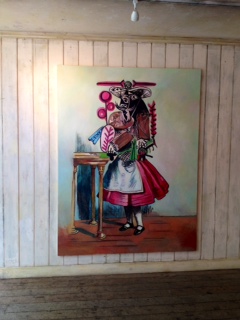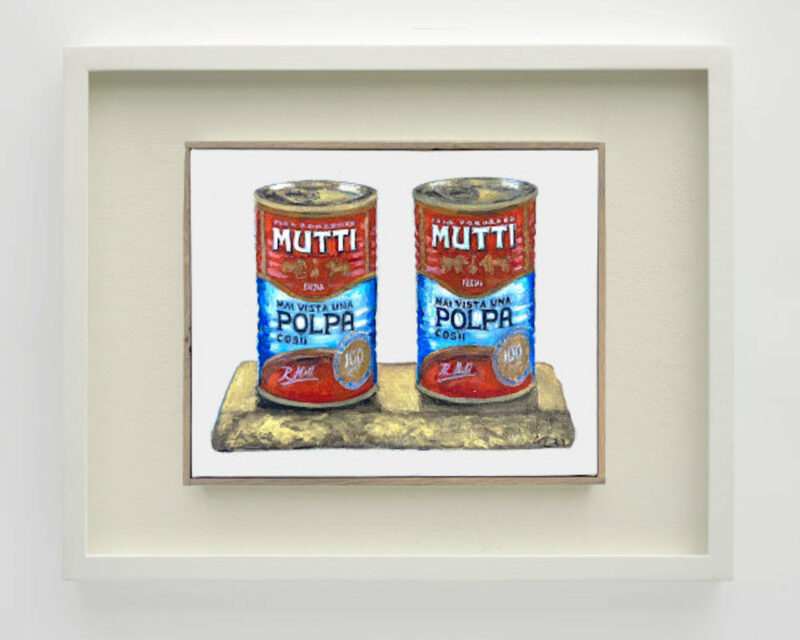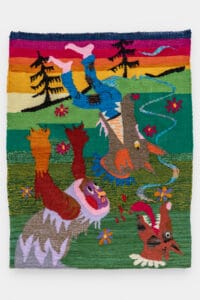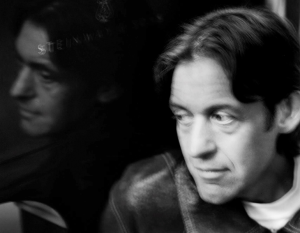
This example, a Picasso in late 1960’s ‘Le Roi’/’Cavalier’ mode includes references to the artist’s contemporaries (Matisse, Rousseau) as Picasso did throughout his career
as well as Velasquez, Rembrandt, Bateau Lavoir-era Cubism and literary illustration (John Tenniel) – all contributing signature aesthetic to this important work.
79 Beak Street W1F 9SU www.riflemaker.org
Wolfe is a much-praised British born, established painter of Polish-Jewish descent whose paintings combine elements signature imagery from the classical world and also from contemporary life. Born into a dynasty of painters Lenkiewicz’s grandfather was Baron von Schlossberg, court painter to King Ludwig II of Bavaria. Lenkiewicz graduated from university with a degree in contemporary epistemology. His work features in numerous international collections.
The concept of the upcoming LENKIEWICZ exhibition at Riflemaker is that the artist is making paintings by the great Masters which may have once existed, according to various
sources, but were unfinished, abandoned or lost.
About The Artist
Wolfe von Lenkiewicz (born in 1966), is a British artist based in London. He is known for his artistic reconfigurations of well-known imageries from art history and visual culture to create ambiguous compositions that question art historical discourses. He lives and works in London.
Wolfe von Lenkiewicz was born in Dartmoor, England in 1966 to Celia Norman and the British painter Robert Lenkiewicz. He is of German-Polish-Jewish descent, with his great-grandfather being Baron von Schlossberg, court painter to King Ludwig II of Bavaria. Lenkiewicz was educated at University of York graduating in 1989 with a degree in Philosophy and specialising in Contemporary Epistemology.
Lenkiewicz’ chief artistic concern is our use of language and its re-interpretation in the form of the visual arts. His art historical intervention demonstrates our own complacency in art towards famous images, namely those highly learnt visual compositions of art history. Our knowledge of them has become so much second nature that we take them for granted. It is not until they are re-arranged or disturbed that we realise how much confidence we place in them. Oscillating between painting, drawing and sculpture, the provocative nature of his work demonstrates the infinite possibilities that exist within the images of our time.
The history of art can be understood as compromising of changes from one mode of visual representation to another. Lenkiewicz simulates the formal structures of drawing and painting by his flawless rendering imbued with a Humanist and Renaissance feel and understanding of iconography however the difference is the highly contemporary and extreme nature of his work. A closer look reveals the familiar being affronted by an inherently subversive or anachronistic element introduced by the artist. This method is not unlike grafting, hacking or an act of bio-terrorism and suggests the often deplored phenomenon of contamination of the “true culture” by the one called “sub-culture”.
On this supposition, the artist seems to designate the destruction of classic culture under the influence of a trivialisation of the world. But we can, conversely, see in it the translation of the idea of the successful cohabitation of different cultures coming from almost opposing universes. This work in the form of a wink of an eye would prove in this way that “subculture” grafts very well onto the most classic representations. The cross of the references lead to interesting and new hybridisation processes that result in a dynamic discourse. Lenkiewicz’ ironic discourse is pushed to the limit and it is not known if his treatment of a theme is about a condemnation of the mixing or a praise of the cultural cross-fertilisation. On the one hand the artist with his high technical ability achieves the effect of seductively drawing in and transfixing the viewer. This can be witnessed by his transcriptions seemingly made with reverence, never mocking or parodying his subjects. Lenkiewicz instead gives a forgotten or misunderstood language, icon or historical event a free ride into the modern world vernacular, liberating as it were from the shackles of history into a new universe of meaning.
Lenkiewicz is known for his controversial approach to raising critical questions about art and exploring what it means to be a contemporary artist in the 21st century.









